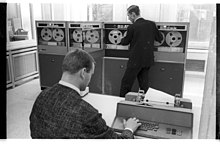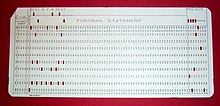Computer Operation Level-3 Suggestion V-7
Written Test Computer Operation Level-3 Suggestion V-7 by Job Edu BD
First, test yourself with the following MCQs, if you can’t do it, you can check the answer by clicking on the answer button.
Computer Operation Level-3 Suggestion V-7.
1.A light sensitive device that converts drawings, printed text, or other images into digital form is called
- Plotter
- Key board
- Scanner
- OMR
2.What is the team for unsolicited Email?
- Spam
- Back bone
- Unsent
- News group
3. ………. Cannot be following used to work in MS Office?
- Joystick
- Scanner
- Light Pen
- Mouse
4.Which term is related with increasing or decreasing the space between characters?
- Page Number
- Spacing
- Header
- Footer
5.The Slide that is used to introduce a topic and set the tone for the presentation is called the
- Title Slide
- Bullet Slide
- Table slide
- Graph Slide
6.Which One is not a way of communication?
- Verbal
- Written
- Online Communication
- Zoom
7.Which one is not a presentation software?
- Prezi
- PowerPoint Presentation
- Google slides
- Microsoft word
8.To Start online meeting which one is not essential?
- Internet Connection
- Computer/ Smart phone
- Web Browser
- Microsoft word
9.What is the Shortcut key for “Find of Replace” dialog box?
- CTRL +F
- CTRL +R
- CTRL +H
- CTRL +SHIFT+F
10.Which feature is not in MS PowerPoint?
- Zoom
- Scan a virus
- Background Color
- Slide Show
11.We Can change the thickness of a line form
- Line Height
- Line Trick
- Line Width
- Line Style
12.Which one Is not a way channels of communication?
- Zoom
- Google meet
- Verbal
- Microsoft team
13.If you want to keep track of different editing of a document which features, will you use?
- Editions
- Versions
- Track Change
- All of above
14.Which one is not possible using google classroom?
- Give a grade
- Give certificate
- Written test
- Assignment submission
15.The Ability to combine name and address with a standard document is called?
- Document formatting
- Database Management
- Mail marge
- Form letter
16.Borders can be applied to.
- Cells
- Text
- Paragraph
- All of Above
17.What type of chart will you use to compare more effectively of two employees in the year 2016?
- Column Chart
- Line Chart
- Pie Chart
- Dot Chart
18.Which one is not an Ergonomic requirement?
- Chair Height,Seat and back adjustment
- Workstation height and layout
- Document Holder
- Enough lighting
19.A feature that displays only the state in column (s) according to specified criteria
- Formula
- Sorting
- Filtering
- Pivot
20.The Ability to combine name and address with a standard document is called?
- Mail marge
- Database Management
- Form letter
- Document formatting
Short Questions-
21.The amount of vertical space between lines of text in a document is called _______?
22.A computer cannot ‘boot’ if it does not have the _______?
23.Full form of LAN?
24.What kind of memory is both static and non-volatile?
25.An error in software or hardware is called a bug. What is the alternative computer jargon for it?
26.Unwanted repetitious messages, such as unsolicited bulk e-mail is known as _______?
27.BIOS stands for _______?
28.Computers manipulate data in many ways, and this manipulation is called _______?
29.Where does most data go first with in a computer memory hierarchy?
30.A DVD is an example of an _______?
1.A light sensitive device that converts drawings, printed text, or other images into digital form is called
C. Scanner
2.What is the team for unsolicited Email?
A. Spam
3. ………. Cannot be following used to work in MS Office?
A. Joystick
4.Which term is related with increasing or decreasing the space between characters?
B. Spacing
5.The Slide that is used to introduce a topic and set the tone for the presentation is called the
A. Title Slide
6.Which One is not a way of communication?
D. Zoom
7.Which one is not a presentation software?
D. Microsoft word
8.To Start online meeting which one is not essential?
D. Microsoft word
9.What is the Shortcut key for “Find of Replace” dialog box?
C. CTRL +H
10.Which feature is not in MS PowerPoint?
A. Zoom
11.We Can change the thickness of a line form
C. Line Width
12.Which one Is not a way channels of communication?
C. Verbal
13.If you want to keep track of different editing of a document which features, will you use?
C. Track Change
14.Which one is not possible using google classroom?
C. Written test
15.The Ability to combine name and address with a standard document is called?
C. Mail marge
16.Borders can be applied to.
A. Cells
17.What type of chart will you use to compare more effectively of two employees in the year 2016?
B. Line Chart
18.Which one is not an Ergonomic requirement?
D. Enough lighting
19.A feature that displays only the state in column (s) according to specified criteria
C. Filtering
20.The Ability to combine name and address with a standard document is called?
A. Mail marge
Short Questions-
21.The amount of vertical space between lines of text in a document is called _______?
Ans: Line Spacing
22.A computer cannot ‘boot’ if it does not have the _______?
Ans: Operating system
23.Full form of LAN?
Ans: Local Area Network
24.What kind of memory is both static and non-volatile?
Ans: ROM
25.An error in software or hardware is called a bug. What is the alternative computer jargon for it?
Ans: Glitch
26.Unwanted repetitious messages, such as unsolicited bulk e-mail is known as _______?
Ans: Spam
27.BIOS stands for _______?
Ans: Basic Input Output System
28.Computers manipulate data in many ways, and this manipulation is called _______?
Ans: Processing
29.Where does most data go first with in a computer memory hierarchy?
Ans: RAM
30.A DVD is an example of an _______?
Ans: Optical Disc
Try Now: Computer Operation Level-3 Vol-5
"You will pass just by asking the mentioned questions, it's not like that at all, but chances are upto 80% to get common. This is just a suggestion. This question is not copied from any board question"
A computer operator is a role in IT which oversees the running of computer systems, ensuring that the machines, and computers are running properly. The job of a computer operator as defined by the United States Bureau of Labor Statistics is to “monitor and control … and respond to … enter commands … set controls on computer and peripheral devices. This Excludes Data Entry.”
Overview
The position has evolved from its beginnings in the punched card era. A Bureau of Labor Statistics report published in 2018 showed that, in the public sector, a major employer of those categorized as Computer Operator was United States Postal Service. In the private sector, companies involved in data processing, hosting, or related services employed computer operators at an even higher rate. The states with the highest employment for computer operators, as of 2018, are: New York, Texas, California, New Jersey, and Florida.
Job role description
The former role of a computer operator was to work with mainframe computers which required a great deal of management day-to-day including manually running batch jobs; however, now they often work with a variety of different systems and applications. The computer operator normally works in a server room or a data center, but can also work remotely so that they can operate systems across multiple sites. Most of their duties are taught on the job,[citation needed] as their job description will vary according to the systems they help to manage.
Responsibilities of a computer operator may include:
- Monitor and control electronic computer and peripheral electronic data processing equipment to process business, scientific, engineering, and other data according to operating instructions.
- Monitor and respond to operating and error messages.
- May enter commands at a computer terminal and set controls on computer and peripheral devices.
- Excludes “Computer Occupations” (15-1100) and “Data Entry Keyers” (43-9021).
The role also includes maintaining records and logging events, listing each backup that is run, each machine malfunction and program abnormal termination. Operators assist system administrators and programmers in testing and debugging of new systems and programs prior to their becoming production environments.
Modern-day computing has led to a greater proliferation of personal computers, with a rapid change from older mainframe systems to newer self-managing systems. This is reflected in the operator’s role. Tasks may include managing the backup systems, cycling tapes or other media, filling and maintaining printers. Overall the operator fills in as a lower level system administrator or operations analyst. Most operations departments work 24×7.
A computer operator also has knowledge of disaster recovery and business continuity procedures. Formerly, this would have meant sending physical data tapes offsite, but now the data is more than likely transmitted over computer networks.
Specializations
Console operator
A console operator interacts with a front panel or a multi-user system’s console
- entering system commands via a keyboard
- entering commands for a subsystem, e.g., HASP, via a keyboard
- replying to requests for information
- taking actions such as mounting computer tapes that were “pulled” by a tape librarian
- supervising a tape operator, especially when there is a non-specific mount request.
These individuals would be trained to use specialized equipment related to their duties.
Beyond the IBM System/360 era
One example of specific hardware used by a console operator is the IBM 3066 Model 2 system console, which included a light pen[citation needed] as an interface device. Other then-new features were:
- replaced “most switch, pushbutton, and indicator functions”
- as with the 165’s Model 1, had a microfiche document viewer, a feature introduced for the 360/85’s console.
A console printer (up to 85 characters per second) to provide hard copy was optional when the console was in display mode, and required when it was in printer-keyboard mode.[citation needed]
Peripherals operator
A peripherals operator uses dedicated peripheral equipment connected to computer(s) such as printers, scanners, or storage devices for data transfer to and/or from computers.
Tape operator

Historically, tape operators were in charge of swapping out reels of paper tape, reels of magnetic tape or magnetic tape cartridges that stored computer data or instructions.
Card reader operator

Depending on the type of card reader, either the “9-edge” or the “12-edge” was towards the card reader operator inserting the cards – but the deck of cards was always placed face down.
The United States Army’s wordings were:
- Load cards in hopper face down, 12 edge out, column 1 to the left (1977)
- Place cards in hopper face down with 12 edge to operator (1981)
- 12 edge / face down : IBM orientation.
- nine-edge (also face down) : some other card readers.
Printer operator
In addition to filing or delivering computer printouts, a printer operator at times loads standard or, as directed by a console operator or a remote console, specialized forms.
Tab operator

The tab operator (short for tabulating) would be responsible for preparing and operating tabulating machines to produce statistical results. Hardware such as the IBM 08x sorter series[citation needed] were called tabulating equipment. The 1980 census specifically counted Tab operators (“Tabulating-machine operator”).
Tape librarian
A tape librarian is responsible for the management, storage, and reporting involving data storage tapes. The tape librarian would develop and/or maintain an organization system for the storage and retrieval of tapes, and assist in disaster recovery. Additionally, the librarian would ensure the integrity of the tapes, and submit recommendations for replacement when needed. Some examples of equipment a tape librarian may work with are the IBM 3850.
Post review
Finding Your Post
NSQF / NTVQF Computer Operation Level-3 Suggestion V-7, NSQF NTVQF, Computer Operation Level-3 Suggestion V-7, Job Edu BD, NSDA BTEB, NSDA / BTEB Suggestion Vol-1
NSQF / NTVQF Computer Operation Level-3 Suggestion V-7, NSQF NTVQF, Computer Operation Level-3 Suggestion V-7, Job Edu BD, NSDA BTEB, NSDA / BTEB Suggestion Vol-1
NSQF / NTVQF Computer Operation Level-3 Suggestion V-7, NSQF NTVQF, Computer Operation Level-3 Suggestion V-7, Job Edu BD, NSDA BTEB, NSDA / BTEB Suggestion Vol-1
NSQF / NTVQF Computer Operation Level-3 Suggestion V-7, NSQF NTVQF, Computer Operation Level-3 Suggestion V-7, Job Edu BD, NSDA BTEB, NSDA / BTEB Suggestion Vol-1
NSQF / NTVQF Computer Operation Level-3 Suggestion V-7, NSQF NTVQF, Computer Operation Level-3 Suggestion V-7, Job Edu BD, NSDA BTEB, NSDA / BTEB Suggestion Vol-1
NSQF / NTVQF Computer Operation Level-3 Suggestion V-7, NSQF NTVQF, Computer Operation Level-3 Suggestion V-7, Job Edu BD, NSDA BTEB, NSDA / BTEB Suggestion Vol-1



